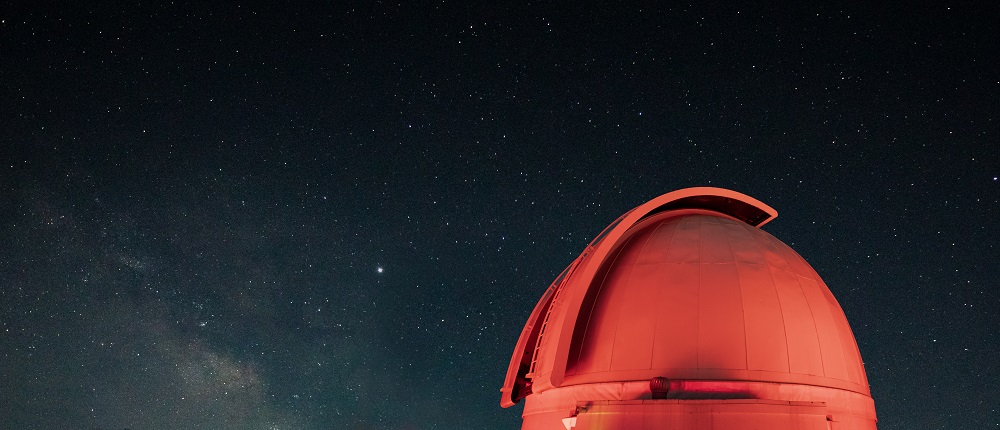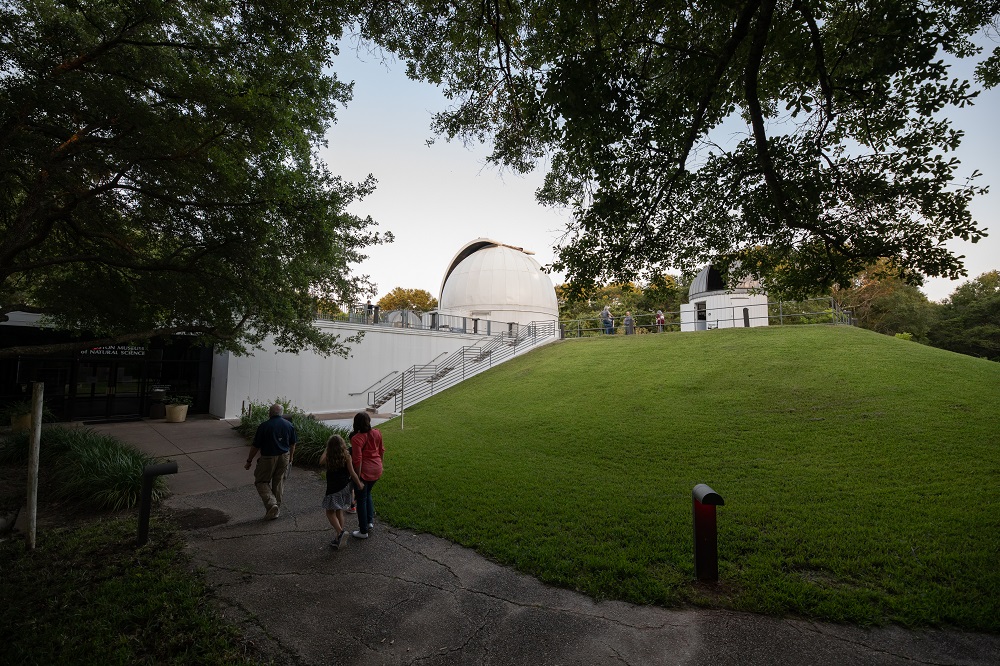It’s time to enjoy the lazy days of summer and the wonders of stargazing nights.
Now that the George Observatory has reopened to the public, the summer months are the perfect time to pre-purchase tickets online, pack up a picnic lunch or snacks along with family or friends, and head to “the George” located inside Brazos Bend State Park for a Saturday night under the stars.

What can you expect to see?
A clear sky in June, July and August offers spectacular starry nights along with the Moon, planets, other celestial objects and several astronomical events.
As June Hershey’s 1941 song proclaims, the Texas “stars at night are big and bright”, especially outside the light-polluted city limits of Houston. Just looking with your eyes, the bright stars Vega, Deneb and Altair of the Summer Triangle asterism will be clearly visible overhead. Summer constellations such as Sagittarius and Scorpius to the South are rich with deep-sky objects such as globular clusters, galaxies, and nebulae, visible with a telescope or binoculars. The planets Venus, Mars, Saturn and Jupiter can be viewed along with the Moon in its regular lunar cycle. From mid-July to mid-August, the year’s best meteor shower occurs, the Perseids, with its peak the night of August 11-12, 2021.
What can be helpful for stargazing?
Along with bug spray to keep mosquitoes away, a sky map can be an aid to identify stars, constellations, and planets in the night sky. Our very own HMNS Astronomer James Wooten provides monthly sky maps right here on Beyond Bones. Check out the month of June and stay tuned for July.
Even better, modern technology offers free mobile phone apps such as Sky Chart, Night Skies, or Sky Safari that one can use to easily identify any object in the sky. You may also be able to spot the International Space Station or track a satellite moving overhead using the heavens-above app.

What if cloudy weather is obscuring your view?
No problem. The George Observatory offers brand-new exhibits, a tour of one or more large telescope domes, along with video feeds of recent telescope images and demonstrations of astrophotography by astronomers, the history and construction of the Observatory, ongoing asteroid research, and meteorites, among others. There’s even the possibility of seeing some wildlife in the park along the way, such as deer, raccoons, or armadillos.
Join us at the George Observatory for stargazing on Saturday evenings, where you are a star among the stars of the night sky!






